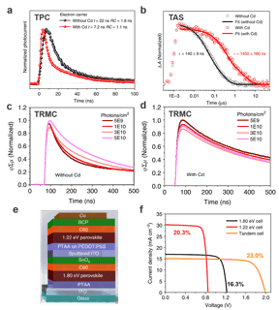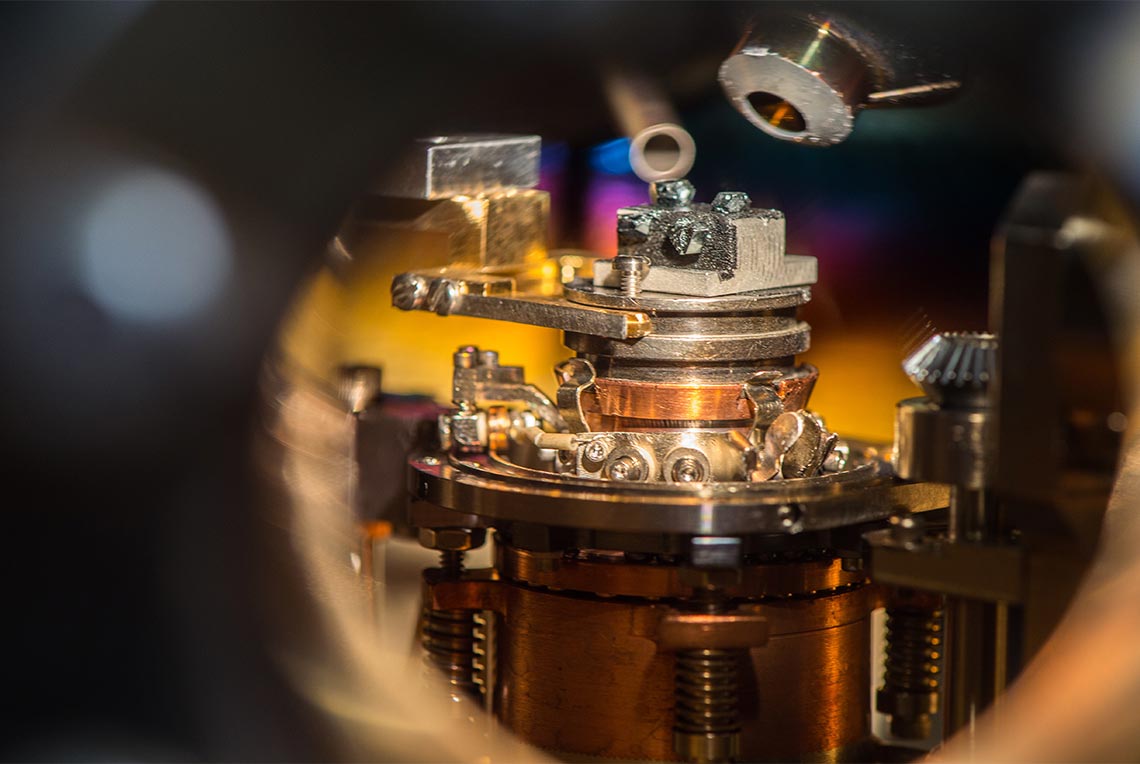Enhancing Electron Diffusion Length in Narrow Bandgap Perovskites for Efficient All-Perovskite Tandem Solar Cells
Oct. 3, 2019
This work provides a promising method to enhance the optoelectronic properties of narrow-bandgap (NBG) perovskites, which unlock the potential of high-efficiency, low-cost, and solution-processable perovskite-perovskite tandem solar cells.
Scientific Achievement
Adding 0.03 molar percent of cadmium ions into Sn-perovskite precursors reduces the background free hole concentration and electron trap density, yielding a long electron diffusion length of 2.72 ± 0.15 µm. It increases the optimized thickness of NBG perovskite films to 1000 nm, yielding high efficiencies of 20.3% and 23.0% for single-junction narrow-bandgap perovskite solar cells (PSCs) and monolithic perovskite-perovskite tandem cells, respectively.
Significance and Impact
Developing multijunction perovskite PSCs is an attractive route to boost PSC efficiencies to above the single-junction Shockley-Queisser limit. However, commonly used Sn-based narrow-bandgap perovskites suffer from shorter carrier diffusion lengths and lower absorption coefficient than lead-based perovskites, limiting the efficiency of all-perovskite tandem solar cells. This issue can be addressed by adding a trace mount of Cd2+ into the NBG perovskite solution, which can effectively increase the electron diffusion length of Sn-based NBG perovskite. This work provides a promising method to enhance the optoelectronic properties of NBG perovskites, which unlock the potential of high-efficiency, low-cost, and solution-processable all-perovskite tandem solar cells.
Research Details
- Electron diffusion lengths of NBG PSCs with and without Cd2+ were studied via transient photocurrent measurement.
- The carrier recombination lifetime in the perovskite films was measured by transient absorption spectroscopy.
- The reduction of trap density by Cd2+ ions was characterized by time-resolved microwave conductance.
Related People
Joseph J. Berry
National Renewable Energy Laboratory
Jinsong Huang
National Renewable Energy Laboratory
Matthew Beard
National Renewable Energy Laboratory










